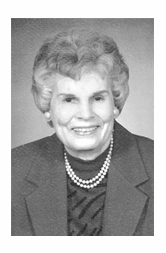I want to share with you a story I read in the March 20, 1952. edition of the Union Register about Cardington native Otto Koeppe, his wife and daughter, and their escape from the Russian side of Germany in 1951.
Their story was revealed when daughter, Christa Koeppe, daughter of Otto, visited the Morrow County Probate Court the week before this publication, to obtain a record of her father’s birth. She had fled the Iron Curtain five and one half months earlier, shortly before her 16th birthday, to elect to become an American citizen.
Her escape made it imperative that her parents also leave their home community, located about eight hours by rail from the American zone of Germany. Christa arrived in the U.S. in December, 1951, and was sponsored by a Chicago philanthropic organization for displaced persons. Her parents then were placed in a displaced persons camp in Europe and were to be sponsored also in this country by the same Chicago organization.
Christa was taken to the American Zone by her mother to visit ill friends. She was left there when her mother returned to her home.
Christa said her parents had been approached by a friendly Communist who informed them the party was becoming suspicious due to Christa’s disappearance and they were slated to be sent to Siberia. They left all their posessions including a flour mill which Mr. Koeppe operated. Through a transportation ruse, they fled their community and arrived in the American Zone where they declared themselves displaced persons.
Otto Koeppe, then 56, was born in Cardington in 1895, the son of Charles and Ida Lisse Koeppe. With his parents and an older brother, Otto, then 8, moved to Germany in 1903, leaving the family farm in Cardington. Otto became a successful miller in Germany but lost his American Citizenship during World War II.
Since that war, he was allowed to continue his business by the Communists, but was allowed only $5 a day for its use.
Otto’s father, Christa’s grandfather, Charles Koeppe, operated a distillery and saloon in Cardington prior to 1903, with distilled whisky under the label of “Whipper Spring Whiskey.” The distillery was located in the brick building along Whetstone Creek used in later years by Hart Oil Co. to house refining equipment used for processing used oil.
Water used in the whisky came from “ripper spring,” the name given to a spring of sulphur water located on the west side of the New York Central Railroad embankment. Older residents said the sulphur spring contained certain medicinal properties.
The sulphur spring ceased flowing shortly after blasting was done for the concrete railroad bridge constructed nearby in 1906. After the Koeppe family moved to Germany the distillery was taken over by Keoppe’s brother-in-law, Hugh Lisse who continued to operate it until 1907 when Cardington voted to become dry.
80 years ago, January, 1939: H.S. Kirkpatrick was named as the Cardington Township representative to the Morrow County Agricultural Society.
50 years ago, January, 1969: Patricia Heacock, Vickie Clinger, Chris Keil, Brenda McClenathan, Philip Helman and Michael Beckel were accepting orders for the 1969 Cardington High School Pirateer. Price was $4.
40 years ago, January, 1979: Annabelle Burggraf was again elected president of the Cardington-Lincoln Board of Education for 1979.






